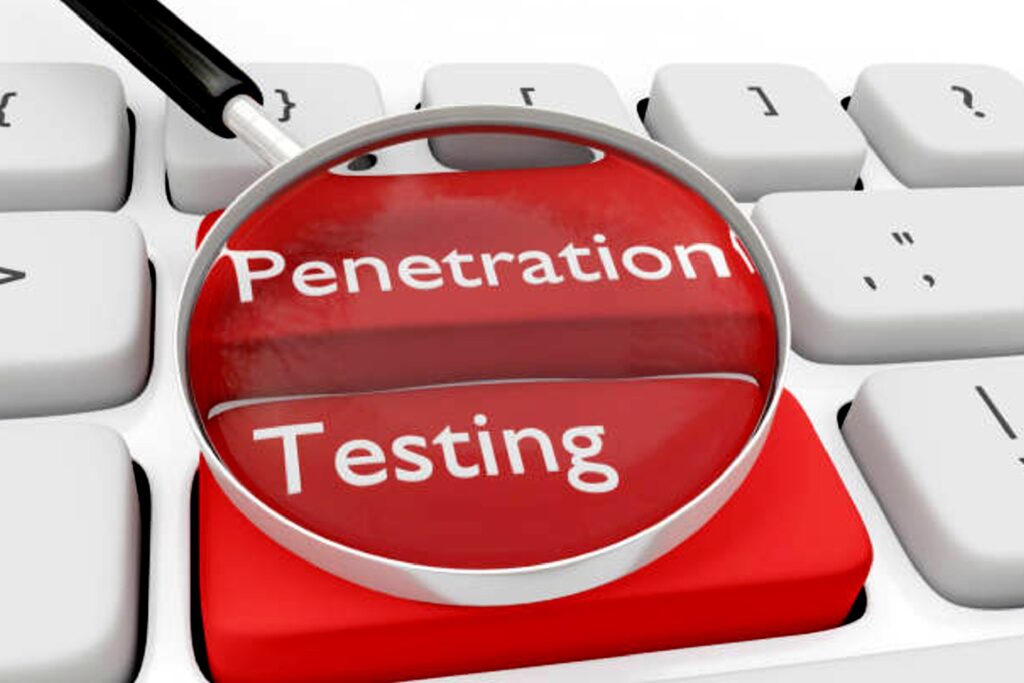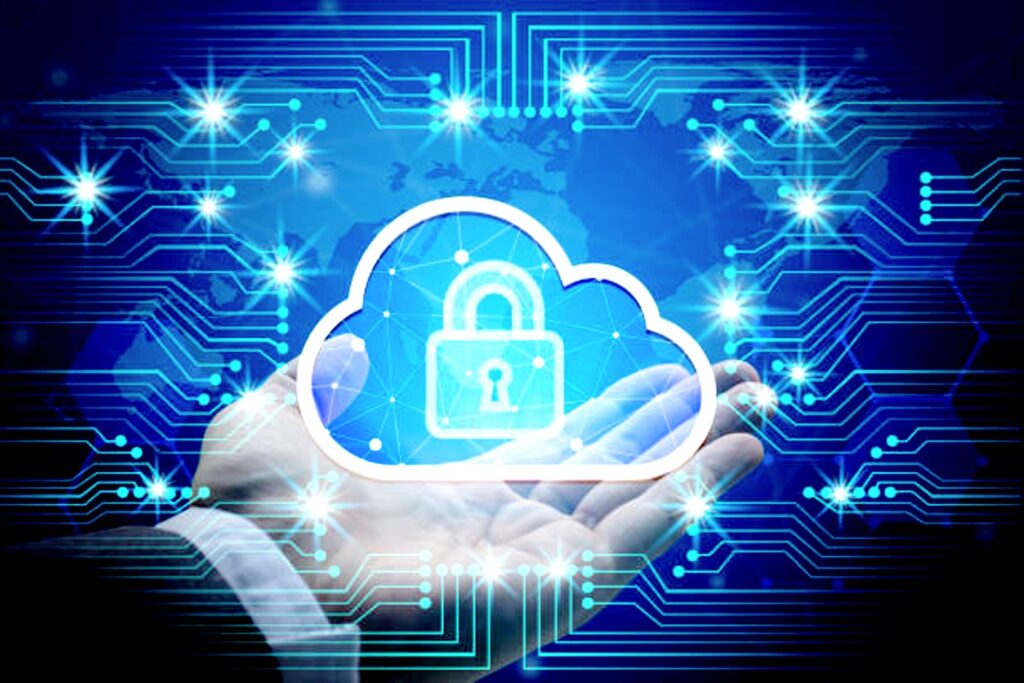Ransomware threats loom large today, posing significant risks to organizations of all sizes. Understanding the nature of these threats and the importance of proactive measures is key. Data backup is crucial for safeguarding your valuable assets. Ransomware cloud backup shields your data from bad actors and cyber extortionists. Imagine an offsite vault, constantly replicating your files, safe from local attacks. For example, if ransomware encrypts your data, you simply restore from the untouched cloud copy, resuming your business operations swiftly. Look for features like:
- Versioning: Recover specific files even if ransomware hit days ago.
- Encryption: Double-layer protection ensures your cloud backups stay unreadable.
- Immutable storage: Lock backups, making them tamper-proof and uneditable.
Don’t wait for disaster. Secure your data with a robust Ransomware Cloud Backup solution.
Understanding Ransomware Threats
Ransomware is a form of malicious software designed to encrypt files and demand payment for their release, often causing disruption to business operations and financial losses. Understanding the evolving tactics employed by cyber criminals is essential for effective defense.
Importance of Data Backup in Ransomware Protection
Data backup serves as a critical defense against ransomware attacks, enabling organizations to recover encrypted files without paying ransom demands. Implementing robust backup strategies is essential for resilience and business continuity in the face of cyber threats.
The Risks of Ransomware Attacks
The impact of ransomware attacks extends beyond financial losses, encompassing damage to reputation, loss of customer trust, and legal liabilities. Exploring the various avenues of attack employed by cyber criminals sheds light on the diverse challenges organizations face.
Exploring the Impact of Ransomware on Businesses
Ransomware attacks can disrupt operations, compromise sensitive data, and lead to financial repercussions such as ransom payments and regulatory fines. Assessing the full scope of these impacts is essential for risk mitigation and resilience planning.
Common Methods of Ransomware Deployment
Cybercriminals deploy ransomware through various vectors, including phishing emails, exploiting vulnerabilities, and malicious downloads. Understanding these attack vectors enables organizations to bolster defenses and prevent successful ransomware infections.
Introduction to Cloud Backup
Cloud backup offers a secure and scalable solution for protecting critical data assets against ransomware threats. Exploring the fundamentals of cloud backup and its advantages over traditional backup methods is key to informed decision-making.
What is Cloud Backup and How Does it Work?
Cloud backup involves storing data in offsite servers maintained by third-party providers, offering redundancy and recovery options in the event of data loss or corruption. Understanding the mechanisms of cloud backup elucidates its role in ransomware protection.
Benefits of Ransomware Cloud Backup Solutions
Cloud backup solutions offer automated, real-time backups, reduced infrastructure costs, and enhanced data accessibility. Exploring these benefits highlights the value proposition of cloud backup for protecting against ransomware attacks.
Ransomware cloud backup offers a lifeline in the fight against data encryption attacks. Imagine a secure, off-site copy of your files, untouched by ransomware’s clutches. This backup, stored in the cloud, lets you recover data quickly, minimizing downtime and ransom demands. Here are five main benefits having a ransomware cloud backup as your data’s defender:
- Impregnable Fortress: Encrypted, off-site storage acts as a digital vault, shielding your files from local ransomware attacks. Think of it as an impenetrable castle for your critical data.
- Time Machine Recovery: Version control lets you rewind to a point before the attack, restoring clean, uninfected versions of your files. It’s like having a time machine for your data!
- Business Continuity Hero: Minimize downtime and lost productivity with rapid data restoration. Get back online quickly, avoiding the financial blow of extended outages.
- Ransomware Negotiation Terminator: Say goodbye to hefty ransom demands. With your data safely backed up, regaining access doesn’t hinge on paying attackers.
- Disaster-Proof Haven: Ransomware isn’t the only threat. Floods, fires, or hardware failures? Cloud backups ensure your data survives any disaster. Consider it an all-encompassing safety net.
For small business owners especially, investing in a ransomware cloud backup, is a wise move for your peace of mind. It ensures your business continuity, and data resilience. Right now, it s the ultimate shield against digital threats.
Why Cloud Backup is Crucial for Ransomware Protection
Cloud backup serves as a critical safeguard against ransomware attacks, enabling rapid recovery and minimizing data loss. Understanding the role of cloud backup in ransomware resilience is essential for comprehensive cybersecurity strategies.
Limiting Data Loss and Downtime
Ransomware cloud backup solutions minimize the impact of ransomware attacks by enabling timely data recovery and restoration. Exploring the role of cloud backup in limiting downtime and reducing business disruption underscores its importance in ransomware protection.
Facilitating Quick Recovery from Ransomware Attacks
Cloud backup solutions offer rapid, on-demand data recovery options, enabling organizations to restore operations swiftly after a ransomware incident. Understanding the speed and efficiency of cloud backup recovery processes is crucial for maintaining business continuity.
Choosing the Right Cloud Backup Solution
Selecting the optimal ransomware cloud backup provider involves considering factors such as security, reliability, and cost-effectiveness.
These decision-making criteria ensures your organizations can choose a solution that meets her specific needs and budget constraints.
Seriously consider the technical specification your cloud backup plan, and ask questions where you remain unsure about what’s on offer.
Factors to Consider When Selecting a Cloud Backup Provider
Evaluating cloud backup providers based on criteria such as data encryption, redundancy, and compliance enables organizations to make informed choices. Understanding the key considerations in provider selection is essential for maximizing the benefits of cloud backup.
Evaluating Security Features and Encryption Protocols
Protecting and evaluating security features and encryption protocols is like building a fortress. You need the right tools for each layer. Security features like multi-factor authentication and encryption protocols play a vital role in protecting your data from ransomware attacks.
Consider the robustness of authentication methods like two-factor for entry points. Next, assess the cipher strength of encryption algorithms, opting for high-bit options like AES-256 for robust walls.
Analyze key management practices, ensuring secure generation, storage, and rotation to keep the keys safe – they’re the master lock! Don’t forget vulnerability patching – regularly apply updates to seal cracks in your defenses.
These security measures ensure your company’s robust defense against cyber threats. A secured system is a layered one, built with the right tools and constant vigilance.
Finally, test and evaluate the entire system regularly, mimicking real-world attacks to ensure your fortress withstands any siege.
Implementing Ransomware Cloud Backup Best Practices
Effective implementation of cloud backup solutions requires establishing rigorous backup schedules and implementing multi-layered security measures. Understanding these best practices is essential for optimizing the efficacy of cloud backup in ransomware protection.
Establishing Regular Backup Schedules
Regular backups ensure up-to-date data copies are available for restoration, minimizing the impact of ransomware attacks. Exploring strategies for scheduling backups and retention policies enhances data protection and resilience.
Implementing Multi-Layered Security Measures
Layered security measures, including encryption, access controls, and intrusion detection, fortify cloud backup systems against ransomware threats. Understanding the role of each security layer is crucial for comprehensive cyber threat protection.
Testing and Monitoring Backup Systems
Regular testing and monitoring of backup systems are essential for ensuring their effectiveness and reliability in ransomware scenarios. Exploring best practices for testing and monitoring enhances confidence in backup and recovery capabilities.
Importance of Regular Testing for Backup and Recovery Processes
Testing backup and recovery processes validates their functionality and identifies any weaknesses or limitations. Scheduled and ad-hoc testing exercises the system under various conditions, ensuring readiness for real-world ransomware incidents.
Monitoring Backup Systems for Anomalies and Performance Issues
Continuous monitoring of backup systems detects anomalies, performance issues, and potential security breaches. Real-time alerts and logging enable prompt response to emerging threats and ensures data integrity and availability.
Integration with Ransomware Detection and Response Tools
Integration with ransomware detection and response tools enhances visibility and automates incident response processes. Exploring integration options maximizes the efficiency and effectiveness of ransomware mitigation efforts.
Enhancing Ransomware Detection Capabilities with Cloud Backup
Integration with ransomware detection solutions enables early identification of ransomware activity and triggers automated response actions. Correlating backup and security events improves threat detection and reduces detection and response times.
Streamlining Incident Response Processes with Integrated Solutions
Automated incident response playbooks and orchestration capabilities streamline response efforts and minimize downtime. Seamless integration with backup and recovery systems ensures rapid remediation and data restoration in ransomware scenarios.
Educating Employees on Ransomware Awareness
Employee education and awareness are key components of ransomware defense, empowering staff to recognize and report suspicious activity. Training initiatives and ongoing communication foster a culture of vigilance and cybersecurity consciousness.
Training Employees to Recognize and Report Ransomware Threats
Interactive training modules and simulated phishing exercises educate employees on ransomware threats and best practices. Encouraging reporting of suspicious activity empowers staff to act as first line defenders against ransomware attacks.
Promoting a Culture of Vigilance and Cybersecurity Awareness
Regular communication and awareness campaigns reinforce the importance of cybersecurity and encourage employee engagement. Recognizing and rewarding vigilance fosters a security-conscious workforce and strengthens overall resilience against ransomware threats.
Addressing Compliance and Data Privacy Concerns
Compliance with data protection regulations is critical for protecting sensitive information and avoiding regulatory penalties. Implementing appropriate measures ensures compliance with legal and regulatory requirements in ransomware scenarios.
Ensuring Compliance with Data Protection Regulations
Adhering to regulatory standards such as HIPAA, GDPR, and PCI DSS mitigates risks and builds trust with stakeholders. Implementing data encryption and access controls demonstrates commitment to protecting personal and sensitive data.
Implementing Data Retention Policies in Cloud Backup Solutions
Establishing data retention policies ensures compliance with regulatory requirements and reduces legal risks. Balancing data accessibility with privacy considerations optimizes data management and facilitates effective response to ransomware incidents.
Testing and Monitoring Backup Systems
Regular testing and monitoring of backup systems are essential for ensuring their effectiveness and reliability in ransomware scenarios. Understanding the importance of proactive maintenance and detection of anomalies enhances confidence in data recovery capabilities.
Importance of Regular Testing for Backup and Recovery Processes
Scheduled testing of backup and recovery processes helps validate their functionality and identify any weaknesses or limitations. Exploring testing methodologies and scenarios enhances preparedness for real-world ransomware incidents.
Monitoring Backup Systems for Anomalies and Performance Issues
Continuous monitoring of backup systems enables early detection of anomalies or performance issues that may compromise data integrity or availability. Understanding the significance of real-time monitoring enhances response capabilities and minimizes the impact of ransomware attacks.
Integration with Ransomware Detection and Response Tools
Integrating cloud backup solutions with ransomware detection and response tools strengthens cybersecurity posture and streamlines incident response processes. Understanding the synergy between backup and threat detection enhances resilience to ransomware threats.
Enhancing Ransomware Detection Capabilities with Cloud Backup
Leveraging integration between cloud backup and ransomware detection tools enables early and accurate identification of ransomware incidents. Exploring detection mechanisms and alerting capabilities enhances response readiness and mitigates data loss.
Streamlining Incident Response Processes with Integrated Solutions
Integrated solutions facilitate automated and orchestrated incident response workflows, expediting remediation and recovery efforts. Understanding the collaborative nature of backup and response tools enhances efficiency and effectiveness in combating ransomware threats.
Educating Employees on Ransomware Awareness
Employee training and awareness initiatives are vital for mitigating ransomware risks and fostering a culture of cybersecurity vigilance. Understanding the role of employee education in preventing ransomware attacks enhances organizational resilience.
Training Employees to Recognize and Report Ransomware Threats
Educating employees on recognizing suspicious emails and phishing attempts empowers them to detect and report ransomware threats promptly. Exploring training modules and simulated phishing exercises reinforces cybersecurity awareness and response capabilities.
Promoting a Culture of Vigilance and Cybersecurity Awareness
Fostering a culture of vigilance and cybersecurity awareness encourages proactive risk mitigation and incident reporting. Understanding the importance of employee engagement in ransomware defense strengthens organizational resilience and response capabilities.
Addressing Compliance and Data Privacy Concerns
Ensuring compliance with data protection regulations and privacy requirements is paramount for protecting sensitive information and avoiding regulatory penalties. Understanding the intersection between ransomware protection and compliance obligations enhances overall risk management strategies.
Ensuring Compliance with Data Protection Regulations
Adhering to data protection regulations such as GDPR, HIPAA, and PCI DSS requires implementing security controls and privacy safeguards. Exploring compliance requirements and implementing appropriate measures mitigates legal and financial risks associated with non-compliance.
Implementing Data Retention Policies in Cloud Backup Solutions
Establishing data retention policies ensures compliance with regulatory requirements and optimizes storage resources. Understanding the principles of data retention and encryption enhances data governance and security posture.
Preparing for Worst-Case Scenarios
Developing a comprehensive ransomware response plan is essential for mitigating the impact of ransomware attacks and minimizing downtime. Understanding the importance of preparation and establishing clear communication protocols enhances resilience and recovery capabilities.
Developing a Ransomware Response Plan
Creating a detailed response plan outlines roles, responsibilities, and response procedures during ransomware incidents. Exploring incident management frameworks and engaging stakeholders ensures swift and coordinated response efforts.
Establishing Communication Protocols and Chain of Command
Establishing communication protocols and chain of command facilitates effective decision-making and coordination during ransomware incidents. Understanding the importance of clear lines of communication enhances response efficiency and minimizes confusion.
Case Studies: Real-World Examples of Ransomware Attacks and Cloud Backup Success Stories
Examining real-world case studies highlights successful recoveries from ransomware attacks using cloud backup solutions. Understanding lessons learned and best practices from actual incidents informs cybersecurity strategies and response planning.
Your Takeaway
Ransomware cloud backup plays a critical role in protecting organizations from costly ransomware attacks. Having an understanding of the risks of ransomware, and implementing cloud backup best practices is essential to cloud security. In addition, this helps you prepare for worst-case scenarios, and can help fortify your cybersecurity defenses and ensure business continuity.
Cloud backups encourages prioritizes data protection and ransomware resilience. This emphasizes the importance of proactive measures to safeguard your digital assets. Nonetheless, embracing best practices and leveraging innovative solutions, you can defend against ransomware attacks and protect your critical data assets.
However, ransomware cloud backup serves as a vital component of modern cybersecurity defense strategies. Integrating ransomware cloud backup solutions is vital to your success in modern day comprehensive risk management approaches. It allows you to fortify your company’s defenses against ransomware attacks and safeguard their most valuable assets.




